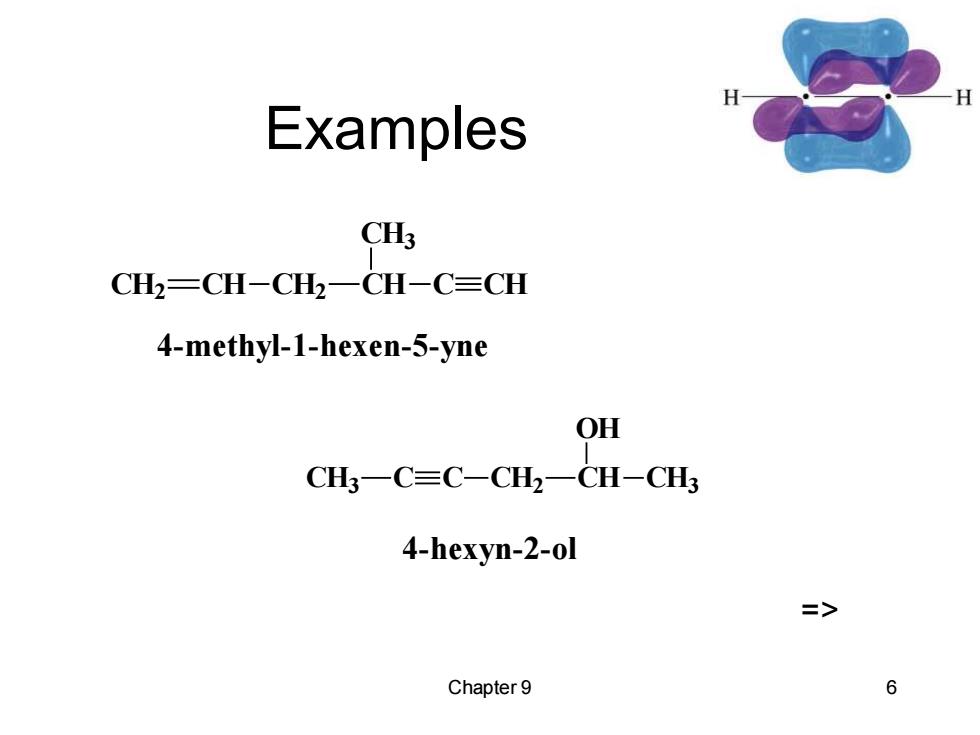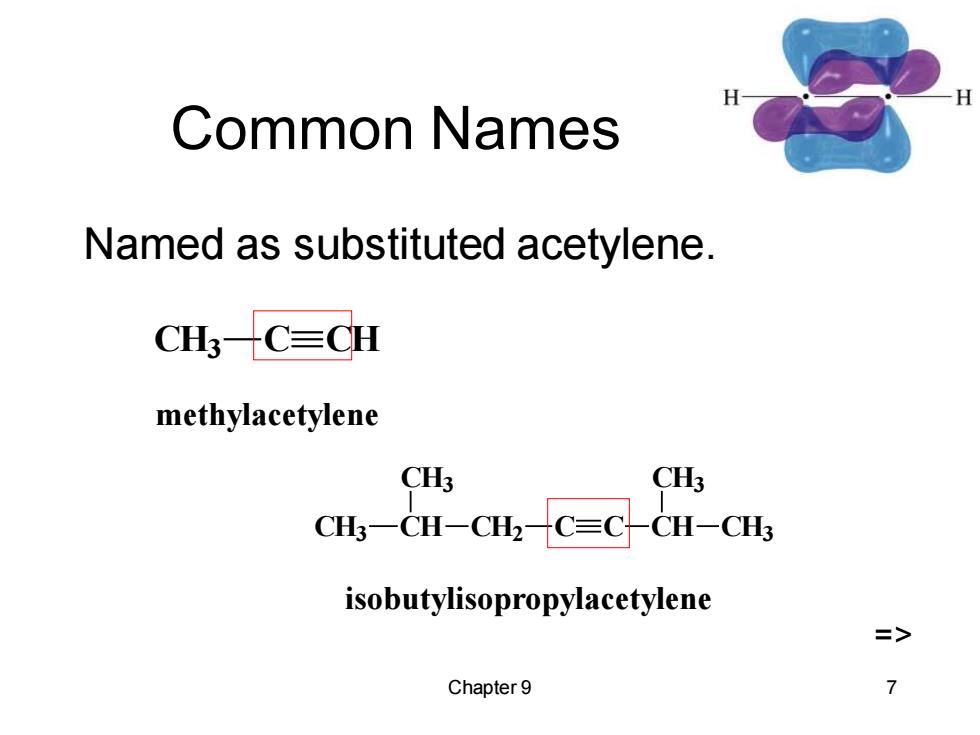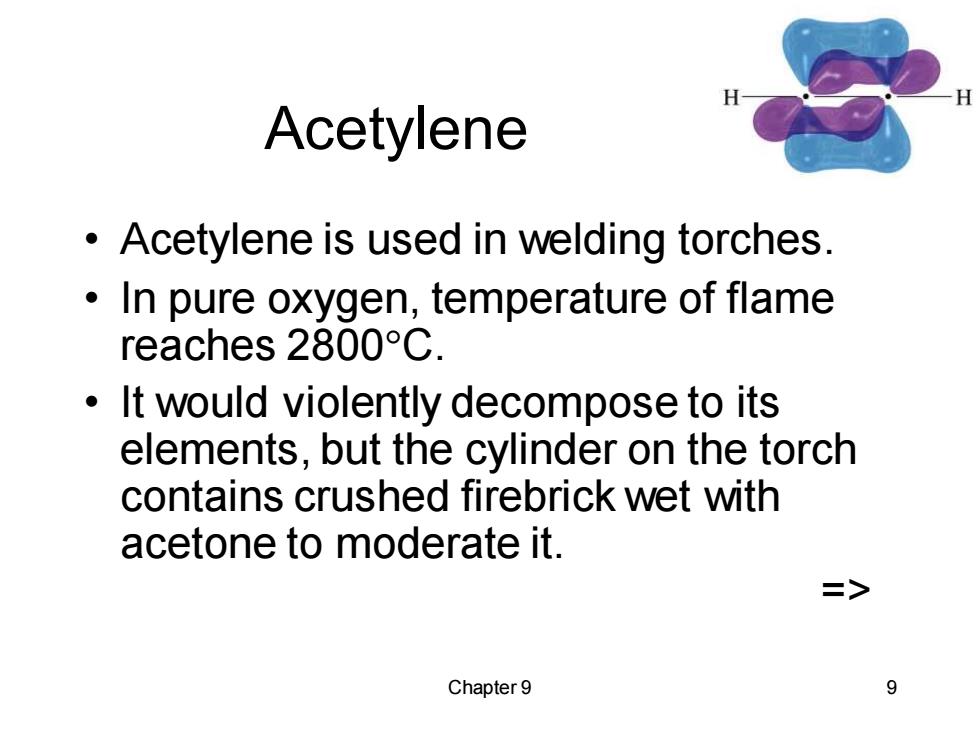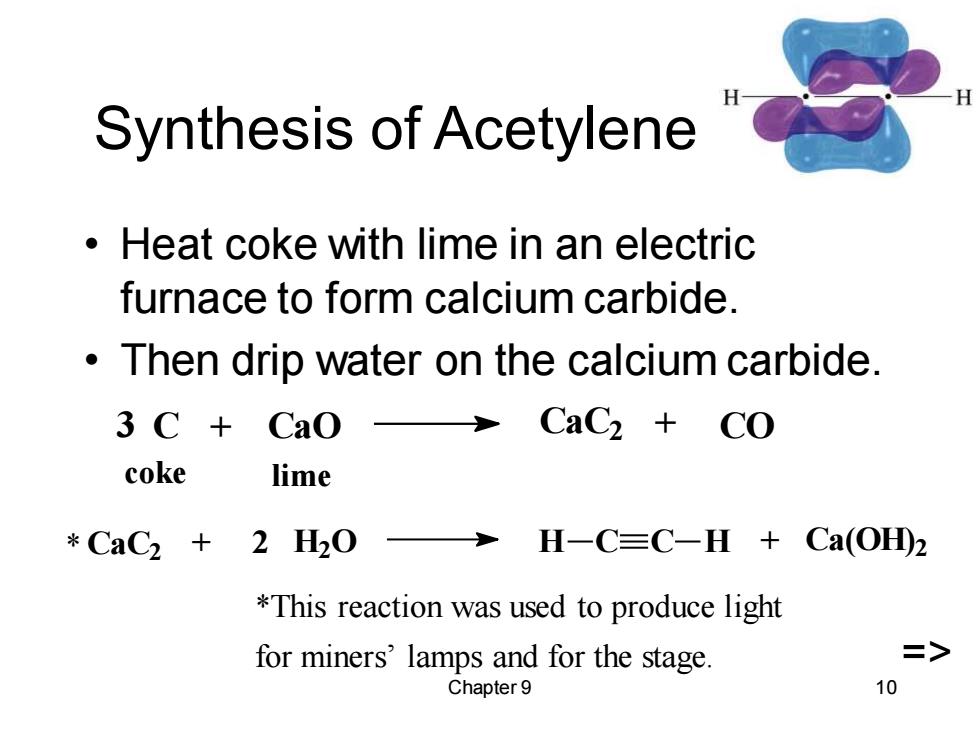
Examples C CH2-CH-CH2-CH-C=CH 4-methyl-1-hexen-5-yne OH CH3一C=C-CH2一CH-CH3 4-hexyn-2-ol 3> Chapter 9 6
Chapter 9 6 Examples CH2 CH CH2 CH CH3 C CH 4-methyl-1-hexen-5-yne CH3 C C CH2 CH OH CH3 4-hexyn-2-ol =>

Common Names Named as substituted acetylene. CH3-C=CH methylacetylene CH3 CH3 CH;-CH-CH2-C=CCH-CH3 isobutylisopropylacetylene Chapter 9
Chapter 9 7 Common Names Named as substituted acetylene. CH3 C CH methylacetylene CH3 CH CH3 CH2 C C CH CH3 CH3 isobutylisopropylacetylene =>

Physical Properties Nonpolar,insoluble in water. Soluble in most organic solvents. Boiling points similar to alkane of same size. Less dense than water. Up to 4 carbons,gas at room temperature. 二> Chapter9 8
Chapter 9 8 Physical Properties • Nonpolar, insoluble in water. • Soluble in most organic solvents. • Boiling points similar to alkane of same size. • Less dense than water. • Up to 4 carbons, gas at room temperature. =>

Acetylene Acetylene is used in welding torches. In pure oxygen,temperature of flame reaches 2800C. It would violently decompose to its elements,but the cylinder on the torch contains crushed firebrick wet with acetone to moderate it. > Chapter 9 9
Chapter 9 9 Acetylene • Acetylene is used in welding torches. • In pure oxygen, temperature of flame reaches 2800C. • It would violently decompose to its elements, but the cylinder on the torch contains crushed firebrick wet with acetone to moderate it. =>

Synthesis of Acetylene Heat coke with lime in an electric furnace to form calcium carbide. Then drip water on the calcium carbide. 3 C+CaO CaC2+CO coke lime *CaC2+2H20> H-C≡C-H+Ca(OHD2 *This reaction was used to produce light for miners'lamps and for the stage => Chapter 9 10
Chapter 9 10 Synthesis of Acetylene • Heat coke with lime in an electric furnace to form calcium carbide. • Then drip water on the calcium carbide. CaC2 + 2 H2O H C C H + Ca(OH) 2 3 C + CaO CaC2 + CO coke lime *This reaction was used to produce light for miners’ lamps and for the stage. => *